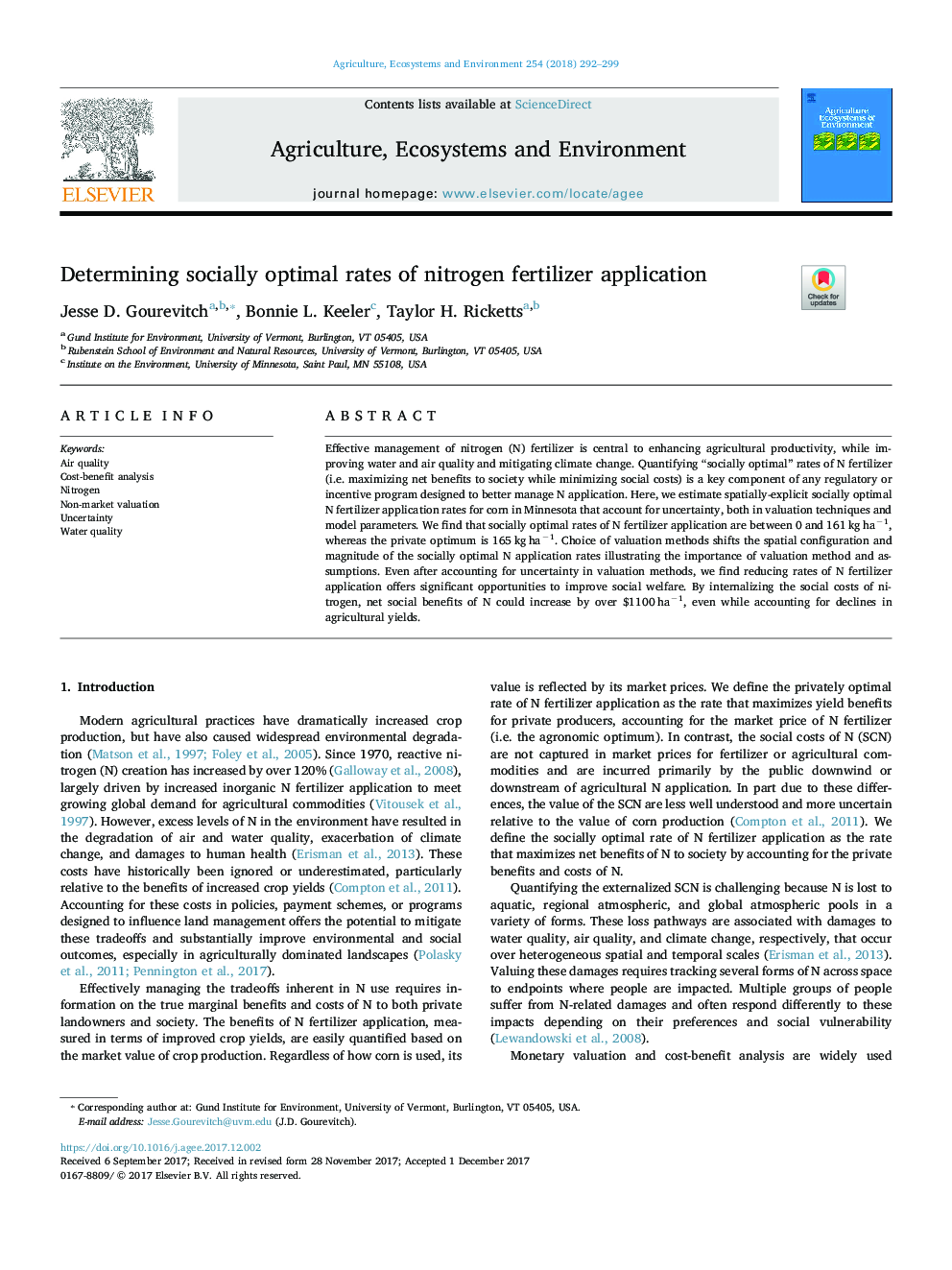| Article ID | Journal | Published Year | Pages | File Type |
|---|---|---|---|---|
| 8487225 | Agriculture, Ecosystems & Environment | 2018 | 8 Pages |
Abstract
Effective management of nitrogen (N) fertilizer is central to enhancing agricultural productivity, while improving water and air quality and mitigating climate change. Quantifying “socially optimal” rates of N fertilizer (i.e. maximizing net benefits to society while minimizing social costs) is a key component of any regulatory or incentive program designed to better manage N application. Here, we estimate spatially-explicit socially optimal N fertilizer application rates for corn in Minnesota that account for uncertainty, both in valuation techniques and model parameters. We find that socially optimal rates of N fertilizer application are between 0 and 161â¯kgâ¯haâ1, whereas the private optimum is 165â¯kgâ¯haâ1. Choice of valuation methods shifts the spatial configuration and magnitude of the socially optimal N application rates illustrating the importance of valuation method and assumptions. Even after accounting for uncertainty in valuation methods, we find reducing rates of N fertilizer application offers significant opportunities to improve social welfare. By internalizing the social costs of nitrogen, net social benefits of N could increase by over $1100â¯haâ1, even while accounting for declines in agricultural yields.
Related Topics
Life Sciences
Agricultural and Biological Sciences
Agronomy and Crop Science
Authors
Jesse D. Gourevitch, Bonnie L. Keeler, Taylor H. Ricketts,
